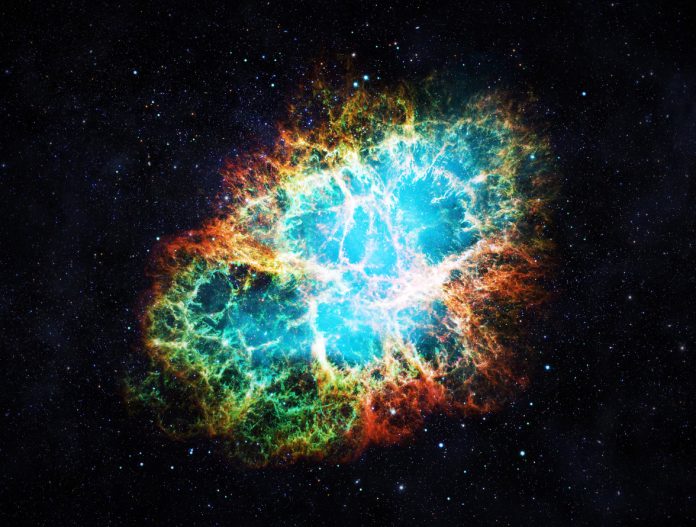The James Webb telescope, operated by NASA, recently observed the Crab Nebula, a remnant of a supernova explosion situated 6,500 light-years away in the Taurus constellation
The celestial object has captured the interest of scientists since its documentation during the year 1054 CE by astronomers of the 11th century. Researchers continue to examine the Crab Nebula to gain insights into its characteristics, behaviour and long-term consequences of a supernova, using it as a nearby and prominent example for in-depth study.
A team led by Tea Temim at Princeton University is utilising Webb’s Near-Infrared Camera (NIRCam) and Mid-Infrared Instrument (MIRI) to explore the origins of Crab Nebula.
They are actively seeking solutions to questions related to Crab Nebula formation and evolution.
“Webb’s sensitivity and spatial resolution allow us to accurately determine the composition of the ejected material” explained Temim.
“Webb’s sensitivity and spatial resolution allow us to accurately determine the composition of the ejected material”
James Webb telescope: Unique vision of the Crab Nebula
The overall structure of the supernova remnant appears similar to the optical wavelength image unveiled by NASA’s Hubble Space Telescope in 2005. In Webb’s infrared observation, a distinct and intricate pattern of delicate gaseous filaments is displayed in a red-orange hue.
Webb’s observations mark a groundbreaking moment as they revealed the presence of dust grain emissions in the central regions depicted in yellow-white and green colours, for the first time.
Magnetic fields and supernova remnants
The infrared imagery captured by Webb offers an enhanced view of various internal mechanisms within the Crab Nebula. Webb sheds light on a phenomenon known as synchrotron radiation, which results from charged particles, such as electrons, travelling at relativistic speeds along magnetic field lines. This radiation is a milky, smoke-like substance that permeates most of the Crab Nebula’s interior.
This feature is a product of the nebula’s pulsar, a rapidly rotating neutron star. The intense magnetic field generated by pulsar accelerates particles to incredibly high velocities, causing them to emit radiation as they follow the contours of the magnetic field.
While synchrotron radiation is observed across the electromagnetic spectrum, Webb’s NIRCam instrument provides an unprecedented level of detail in its portrayal.
Locating the central core of the Crab Nebula
To pinpoint the central core of the Crab Nebula, observe the wispy patterns that form a circular, ripple-like arrangement within the middle, leading to the bright white point at the very center.
As you move further from the core, you can follow the white ribbons of radiation. The sinuous wisps nearby provide a clear outline of the magnetic field structure of the pulsar, which plays a crucial role in shaping and moulding the nebula.
Towards the centre-left and the centre-right regions, the white material curves sharply inwards from the edges of the filamentary dust and converges towards the position of the neutron star, creating an appearance as if nebula’s waist is being cinched or pinched.
The pulsar within the Crab Nebula continues to drive its surrounding gas and dust shell outward rapidly. Prominent yellow-white and green filaments forming loop-like structures, indicative of areas rich in dust grains, were observed.
Astronomers are actively investigating the Crab Nebula’s history, analysing Webb’s data alongside past observations. Additionally, new Hubble data, expected within a year, will provide an updated perspective on the remnant, allowing for a more accurate comparison with Webb’s findings.











